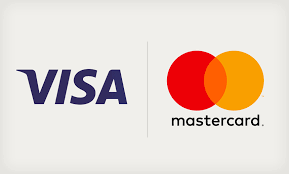Winning work isn’t just about being good at what you do – it’s about being known for it. As businesses look to scale, a strong, consistent PR and content strategy can be the difference between staying under the radar and standing out in a competitive market.
With long sales cycles, complex stakeholder relationships, and a growing focus on sustainability and innovation, companies need to communicate clearly, consistently, and with authority. That’s where PR and content come in—not just as a nice-to-have, but as a core part of your growth strategy.
Here are 10 proven PR and content marketing tips to help businesses in the built environment grow:
1. Own Your Story
Every successful business has a story – why it was founded, what it stands for, and how it adds value. The most memorable brands don’t just talk about what they do; they communicate why they do it.
For companies in the built environment, this might include your commitment to sustainable design, your focus on collaboration, or the legacy you’re building in your local area. Own your narrative and make sure it’s reflected across your website, marketing materials, and pitches.
2. Create Thought Leadership
Buyers want to work with experts – and the best way to demonstrate your expertise is to share your knowledge. Thought leadership builds authority, attracts new opportunities, and opens the door to media coverage and speaking engagements.
Start with your senior leaders: what do they know that others don’t? Use blog posts, LinkedIn articles, podcast interviews or speaking panels to share their insights. You don’t need to shout to be a thought leader...you just need to be useful.
3. Tell Case Studies That Sell
A case study isn’t just a summary of a project, it’s a story of transformation. Great case studies go beyond “what” and explain the “why” and “how.” What was the challenge? How did you solve it? What changed as a result?
Use high-quality images, client testimonials, and measurable outcomes. A well-crafted case study can work across your website, sales presentations, awards entries, and PR campaigns.
4. Use PR for Visibility and Credibility
PR is about getting your news, views, and stories into the right places – trade publications, regional media, online platforms, and industry podcasts. This isn’t just about ego; it’s about credibility. Third-party validation builds trust.
Think about milestones worth sharing: project wins, sustainability initiatives, key hires, or community engagement. Build relationships with journalists and make it easy for them to cover you.
5. Plan Around Industry Cycles
Construction and property are seasonal industries—budgets, tenders, and events tend to follow an annual rhythm. Aligning your PR and content strategy with these cycles ensures you’re visible at the right times.
Create a content calendar that factors in planning windows, industry events, awareness weeks (like Net Zero Week or National Apprenticeship Week), and relevant regulatory changes. Timely content gets more engagement.
6. Enter Awards That Matter
Awards are a great way to build trust and stand out. They’re also excellent PR and marketing tools—whether you win, are shortlisted, or just nominated. Awards can attract new talent, impress clients, and boost morale.
Choose awards that matter to your audience, whether that’s regional property awards, sustainability recognition, or national design accolades. And don’t forget to shout about it on social and in the press.
7. Be Consistent on Social Media
Social media—particularly LinkedIn—is where business conversations happen in the built environment. It’s a platform for visibility, not just vanity.
Don’t just post when you have a new project. Mix up your content: project progress, team stories, behind-the-scenes insights, sustainability updates, and industry commentary. The key? Be human, be relevant, and be consistent.
8. Measure What Matters
You can’t manage what you don’t measure. Track your content performance to understand what’s working and where you can improve.
Look beyond vanity metrics (likes and impressions) to real indicators of success: website traffic, media mentions, lead generation, and engagement from your target audience. Use tools like Google Analytics, LinkedIn analytics, and PR monitoring platforms to stay on top of it.
9. Optimise Content for Search (SEO)
Content isn’t just for humans—it’s for search engines too. Blog posts, online guides, FAQs, and landing pages help your ideal clients find you online when they’re looking for solutions.
Focus on keywords your audience is searching for: “how to prepare for planning permission,” “commercial refurbishment case studies,” or “sustainable M&E design.” Quality content can bring long-term traffic and high-value leads.
10. Leverage Your Network
One of the most powerful yet overlooked content strategies is collaboration. Your clients, partners, consultants, and suppliers all have their own audiences—and mutual interests.
Tag collaborators in social posts, invite them to contribute to case studies or guest blog posts, and highlight their contributions in your content. This not only deepens relationships but also expands your reach organically.
Final Thoughts: Build Trust to Build Growth
In a sector built on trust, reputation is everything. While your work speaks volumes, your communications amplify that voice. By investing in strategic PR and content, you make it easier for the right people to discover, remember, and choose you.
Start small – pick two or three of these tactics and build from there. Over time, a consistent content and PR strategy will help you attract better clients, win more work, and grow with purpose.
If you’re looking to scale and need help building a comms strategy that fits your business, let’s talk. I specialise in working with clients across property, construction, and the built environment…and I’d love to help you tell your story.



